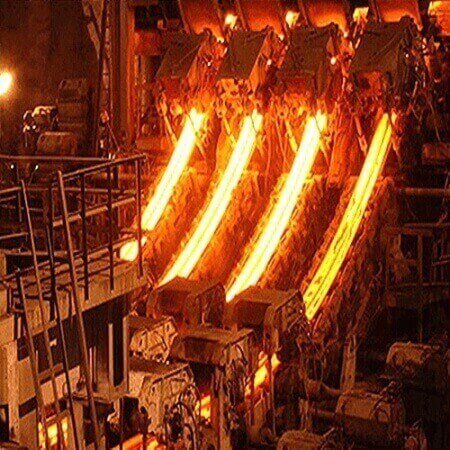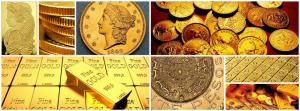Precious Metal Bars – cast or minted bars?
After browsing the online inventory of many precious metal dealers, you may have noticed that precious metal bars are often categorized by the way in which they are made. There are two ways to manufacture such bars, casting and minting, and the finished precious metal products are referred to as cast bars and minted bars.
The process of casting is very old and hasn’t changed that much in the 6000 or more years that it has been used by mankind. The basic techniques used in this process are still mostly the same now as they were in the past. First, the metal is heated until it melts. The liquid is then poured into a mold that is designed to contain a certain amount of metal and to create a certain shape.
After the metal has solidified and cooled sufficiently, it is removed from the mold and in most cases engraved or stamped with such details as a company logo, purity and weight information, serial number and assayer’s stamp. Some of this information can also have been contained within the mold itself (like the logo, purity and weight). The assayer’s stamp and serial number would then be punched (stamped) into the bar while it is still hot and soft.
The precious metal bars that are created in this way are referred to as cast bars or sometimes as poured or molded bars. The surface structure of each bar created in this way is unique since the process of casting often creates abnormalities. These blemishes can often be seen with the naked eye, especially around the bar edges. As you can imagine now, the process of casting is not suitable for the recreation of fanciful designs/images on the bar itself so the created precious metal bars look quite plain.
The big advantage for investors though is that this manufacturing process is relatively cheap. The cost savings in production compared to minted bars result in cheaper prices. Investors are therefore able to buy cast precious metal bars for lower premiums that result in prices not much above the spot price of the metal.
Higher Premiums for minted precious metal bars
Nowadays, most producers of minted bars use a continuous casting machine that produces a long strip of metal of standardized width and thickness. So the process of minting includes the process of casting.

Similar continuous casting machines are used in the production of long precious metal strips of uniform width and thickness
It is therefore no surprise that the added steps that follow after casting this long blank strip of metal result in much higher production costs. The strip of metal is then cut into pieces of identical length. Additional steps ensure that each piece is of the same weight, width and thickness. Once that has been accomplished, the blank precious metal bars are heated a bit in a furnace to make them softer for the striking process.
The blank bars are then struck with dies, just like a coin would. The crafted dies can include intricate designs that result in precious metal bars with artistic designs. Especially the producer PAMP Suisse is famous for the artistic design of its precious metal bars. PAMP uses many different designs such as the image of Lady Fortuna (the Roman goddess of fame and fortune), the American Statue of Liberty, Chinese Lunar zodiac animals and even love-themed designs.
After the striking process, the bars are cleaned, polished and dried. The many steps that are necessary to produce a high quality minted bar result in much higher premiums. Investors that want to buy the largest quantity of a certain precious metal are therefore better off buying cast bars. The choice of sizes and designs is far greater for minted bars though as most buyers prefer these more neatly crafted bars and don’t mind paying a little bit more for them.


